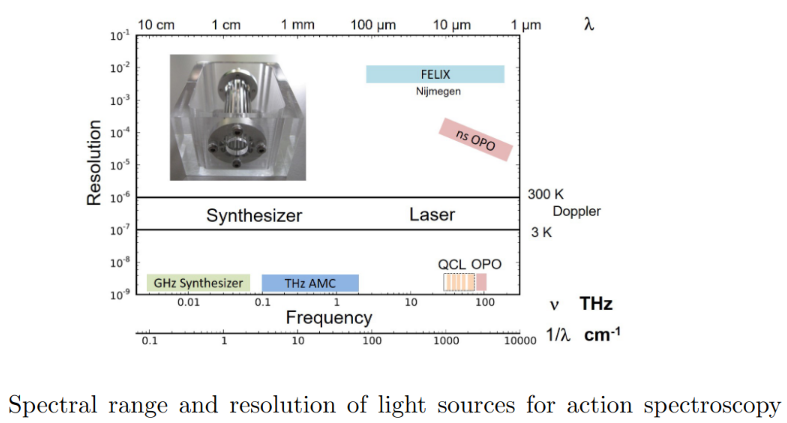Prof. Dr. Stephan Schlemmer, Invited Lecture, “32nd Summer School and International Symposium on the Physics of Ionized Gases”, Belgrade, Serbia:
Molecular ions play a vital role in space because they are readily formed by the ubiquitous cosmic ray ionisation and often undergo rapid chemical reactions even at the low temperatures of the interstellar medium. It is an important task of laboratory astrophysics to provide astrophysicists with high resolution spectra of molecular ions. Action spectroscopy
in cryogenic higher-order multipole ion traps as depicted in the insert of the Figure below was instrumental to overcome limitations of traditional ways of ion spectroscopy. Mass selection paired with low temperature storage and near unity ion detection efficiency are unique features of these techniques (McGuire et al., 2020). Today narrow band infrared
lasers are commercially available and allow to record rotationally resolved vibrational spectra (see Fig.). In our newly developed leak-out spectroscopy (LOS) method the ions of interest are kicked-out from the trap based on a vibration-to-translation energy transfer (Schmid et al., 2022). We use the highly accurate THz radiation from amplifier multiplier chains (THz AMC, see Fig.) to employ THz-infrared double resonance schemes in order to also record pure rotational transitions (Asvany and Schlemmer, 2021). Based on these spectra several ionic species have been found in space. Examples as published in (Silva et al., 2023) will be discussed along with experiments beyond spectroscopy.

